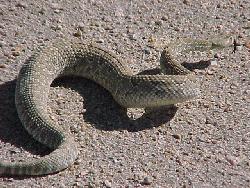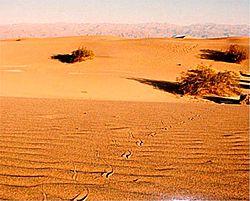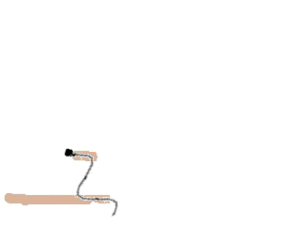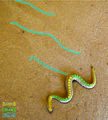Sidewinding facts for kids
Sidewinding is a special way some snakes move. They use it to glide across loose or slippery ground. Think of places like soft sand or squishy mud.
Many snakes use sidewinding. For example, the Saharan horned viper (Cerastes cerastes) and the sidewinder rattlesnake (Crotalus cerastes) use it in the desert. Some snakes in Southeast Asia also use it to move across muddy areas near the ocean.
How Do Snakes Sidewind?
When a snake sidewinds, it lifts parts of its body off the ground. It moves its head forward first. Then, its body follows, lifting from where it was and moving ahead. It's like the snake is throwing its head forward and then pulling the rest of its body along.
The snake always keeps some parts of its body still on the ground. These parts push off the surface. This helps the snake move without slipping. As it moves, the snake goes forward at an angle. It leaves behind cool, J-shaped tracks in the sand or mud.
You can even see the marks of the snake's belly scales in these tracks! Each track is usually about as long as the snake itself.
Why Do Snakes Sidewind?
Sidewinding is a very smart way for snakes to move. It helps them get across slippery ground without sliding around. Because parts of their body stay still on the ground, they get a good push.
This way of moving also saves a lot of energy. It takes much less effort for a snake to sidewind than for other animals (or even other snakes) to move the same distance.
Some people think snakes sidewind because the sand is hot. But there is no proof that this is true. Sidewinding is mainly about moving easily on tricky surfaces and saving energy.
Images for kids





